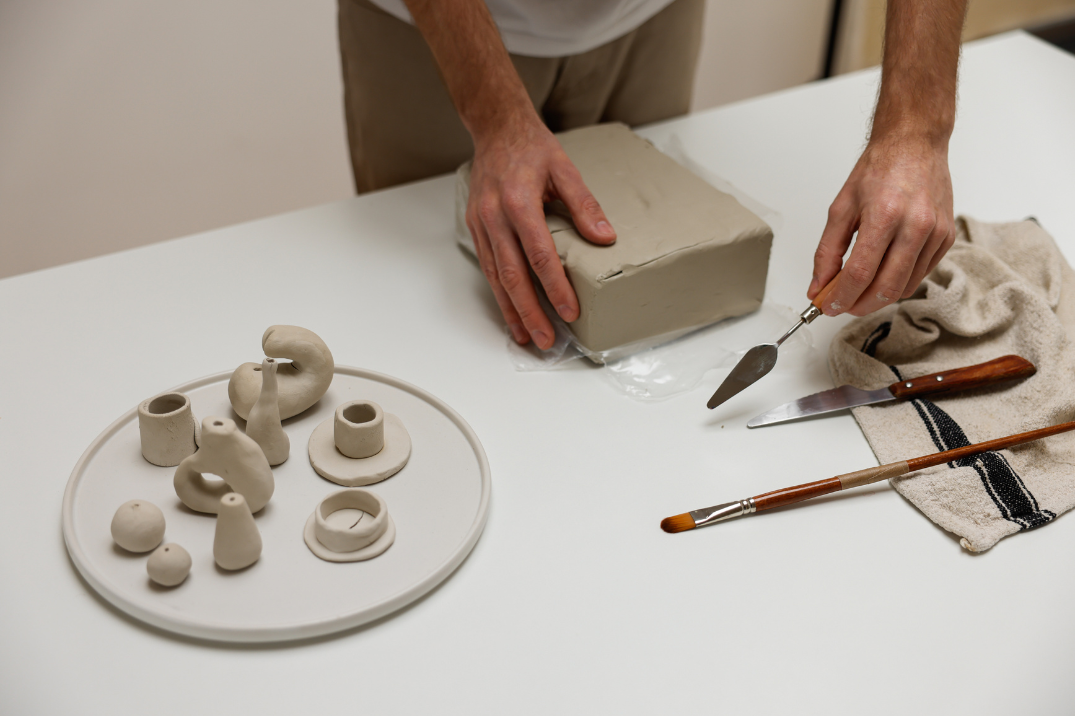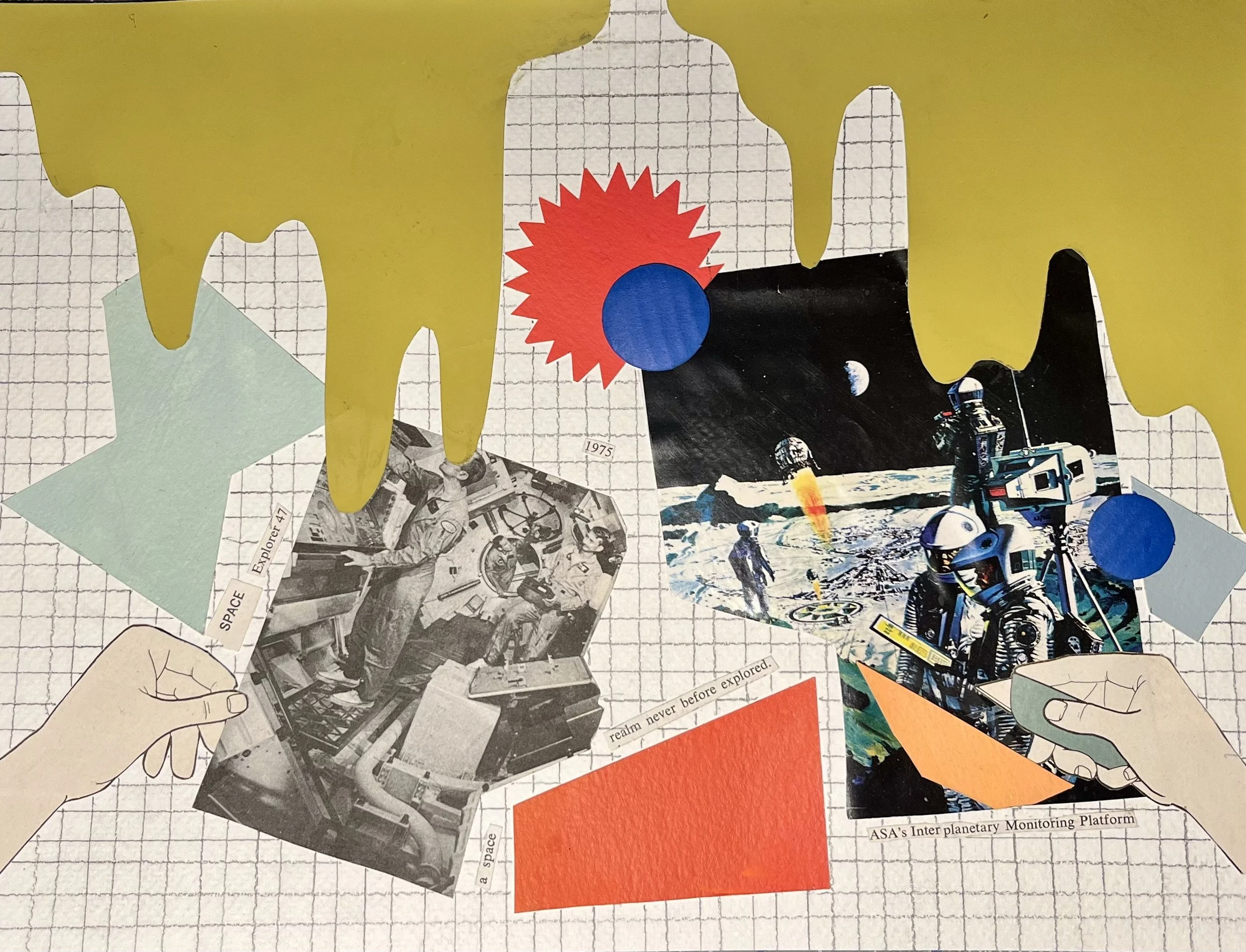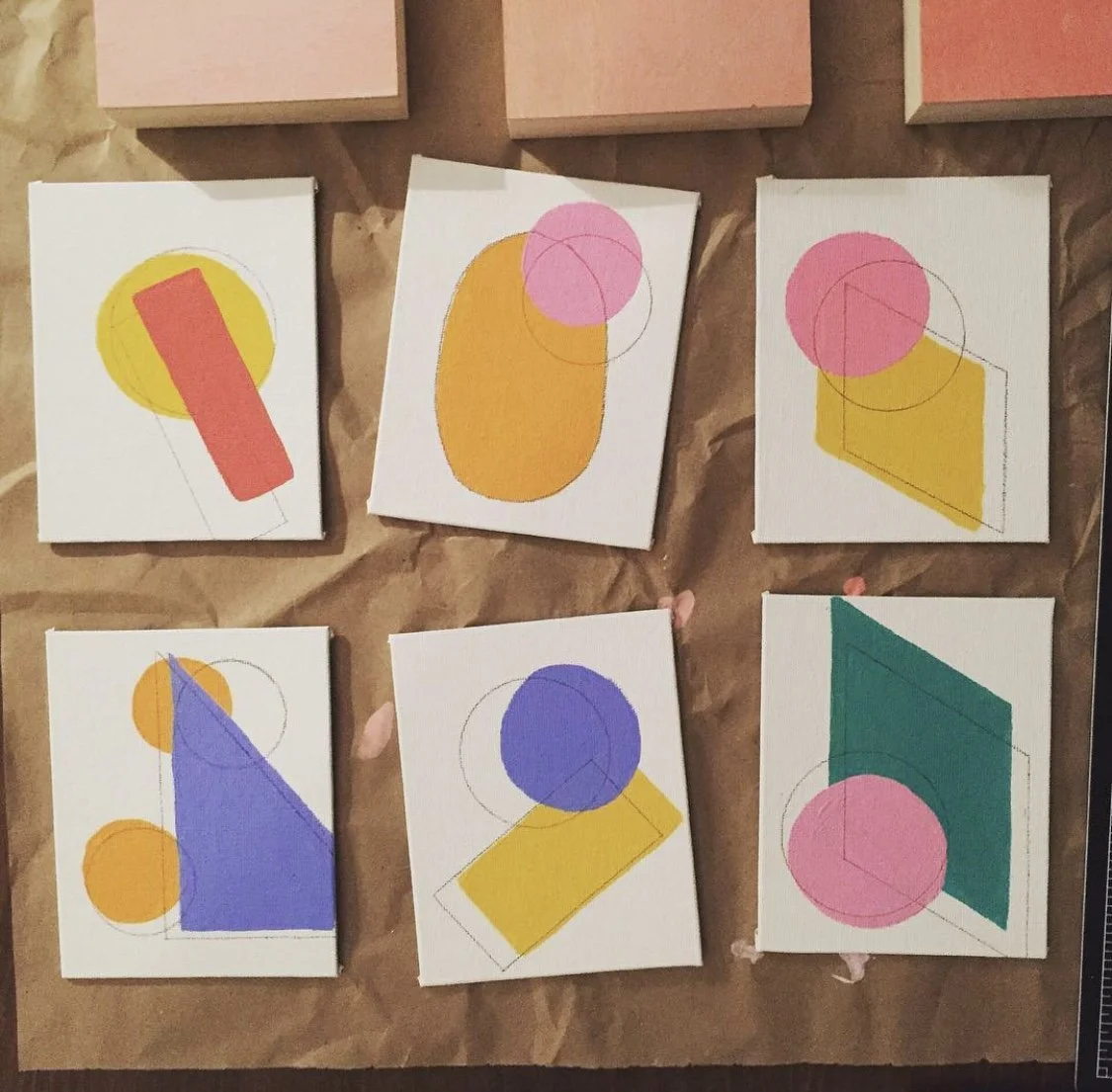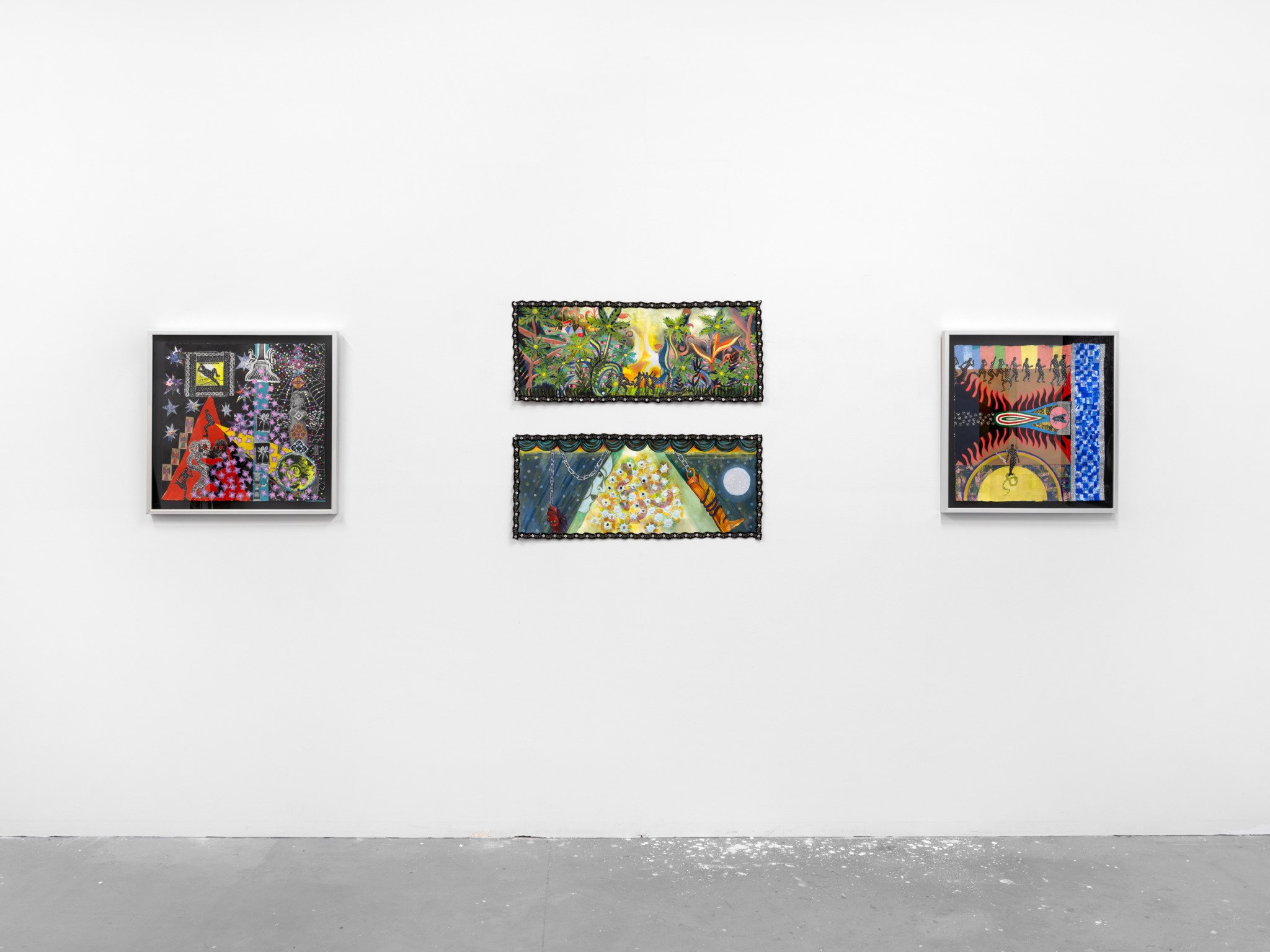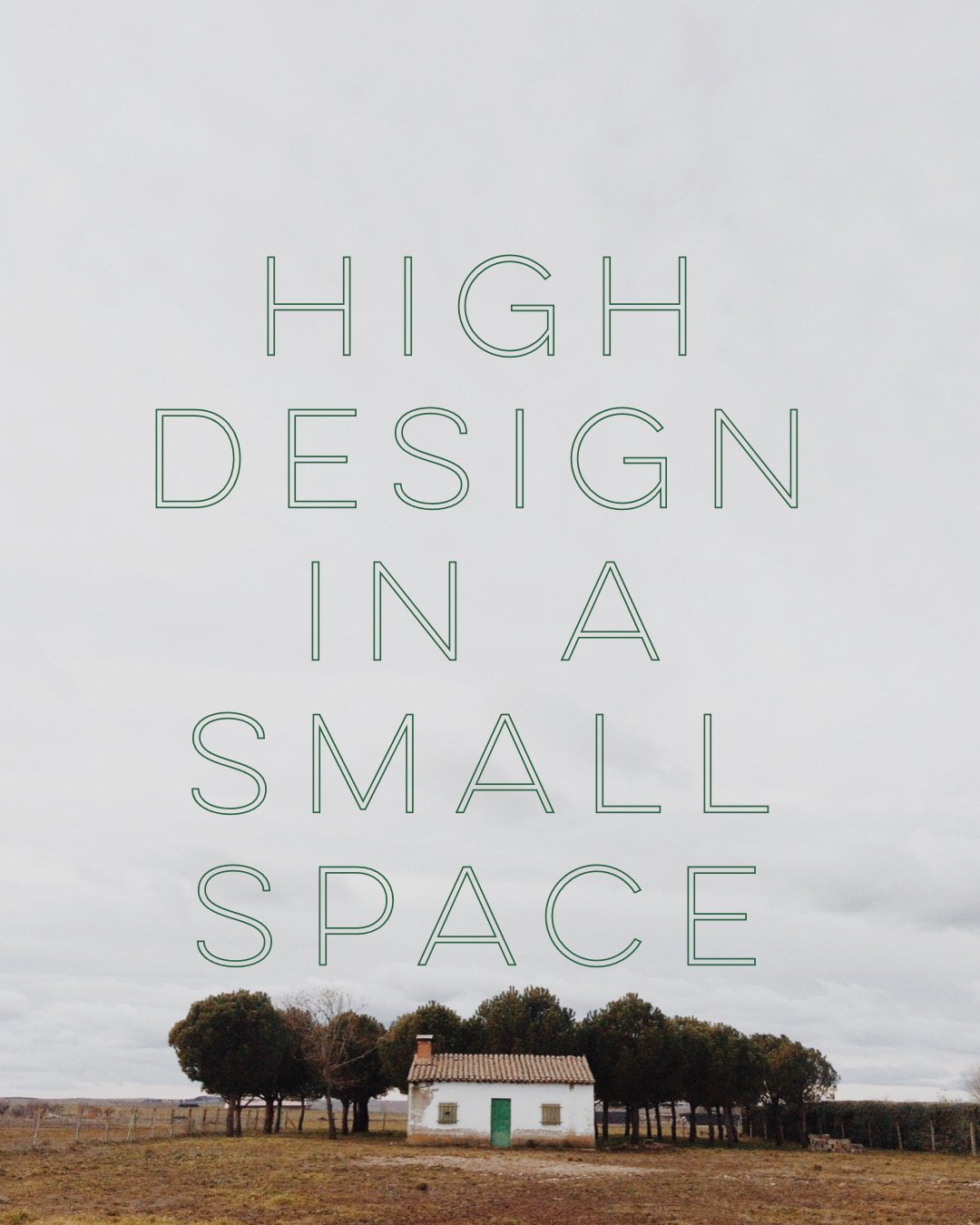You’ve been thinking about getting a custom piece of art made. Whatever the reason, commissioning art is a super fun and personal way to bring your ideas to life—and support an artist in the process. But if you’ve never done it before, it might feel a little intimidating. Where do you even start? How do you ask an artist without sounding awkward? What if it’s expensive?
Read MoreEast Westphalia: a Region of Germany with a Rich Furniture-making Tradition
This region, part of the federal state of North Rhine-Westphalia, is not only rich in natural beauty and cultural heritage—it’s also home to one of Europe’s most vibrant furniture-making traditions. For decades, East Westphalia has quietly built a reputation as a powerhouse of the furniture industry, blending centuries-old craftsmanship with cutting-edge design and technology.
Read MoreA Brief History of Collage: From Tradition to Modern Innovation
Collage, as an art form, is both a revolutionary and a playful method of creating, transforming, and reshaping art from existing materials. Its name comes from the French word coller, which means “to glue” or “to paste.” While the technique has been widely used in various art movements, it wasn't always seen as the sophisticated, avant-garde medium it is today. Instead, collage started as a modest, yet powerful, tool that artists used to challenge the boundaries of conventional art.
Though the idea of incorporating different materials into a single artwork can be traced back to antiquity, the true birth of collage as a deliberate artistic practice is usually attributed to the early 20th century. In the late 1800s and early 1900s, artists began to experiment with mixed media, bringing together different textures and materials into their works. However, it was not until the rise of modern art movements that collage came into its own as a legitimate form of artistic expression.
The Pioneers: Cubism and the Dada Movement
Collage as we know it today first emerged in the early 1900s, with the Cubists leading the charge. In 1912, Pablo Picasso and Georges Braque introduced collage to the world through their groundbreaking Cubist works. These artists started incorporating everyday objects—newspapers, wallpaper, and even pieces of cloth—into their paintings, breaking the boundaries of traditional painting techniques. They didn’t just depict reality; they tore it apart and reassembled it, shifting the way people viewed space, form, and texture.
Picasso's "Still Life with Chair Caning" (1912), for example, is often considered one of the first works to use collage. In this piece, Picasso combined a piece of oilcloth printed with a chair caning design with a painting, creating a layered effect that blurred the lines between reality and representation.
The Dada movement, which emerged around the same time as Cubism, took this experimental approach even further. Artists like Hannah Höch and Kurt Schwitters, driven by the chaos of World War I, used collage to critique society, politics, and culture. Dadaists weren’t afraid to break taboos, using scrap materials like newspaper clippings, advertisements, and found objects to challenge traditional aesthetics and make social commentary.
Surrealism and Collage: A New Form of Dream Logic
The Surrealists, another group of artists heavily influenced by the Dadaists, adopted collage in the 1920s and 1930s to explore the subconscious mind. Artists like Max Ernst, Salvador Dalí, and Joan Miró used collage to create dreamlike, often bizarre worlds that defied the rational and logical.
Max Ernst, in particular, became known for his technique of frottage—rubbing textures onto paper—and grattage, scraping off paint from the canvas to reveal underlying layers. Collage played a key role in his works, allowing him to juxtapose images in strange and unexpected ways. The Surrealists believed that by combining disparate images, they could tap into a deeper, irrational consciousness, unlocking new ways of thinking and seeing.
Collage in the Post-War Era: Pop Art and the Rise of Consumer Culture
As the world recovered from the devastation of World War II, the art world experienced a seismic shift with the rise of Pop Art in the 1950s and 1960s. Collage, once a radical technique, became more mainstream, and artists began to use it to comment on the emerging consumer culture.
Artists like Richard Hamilton and Robert Rauschenberg used collage to reflect the new reality of mass production, advertising, and media. Rauschenberg’s “Combine” paintings, which blended painting, sculpture, and collage, transformed the canvas into a dynamic space for exploring American society’s consumer-driven lifestyle. In “Erased de Kooning Drawing” (1953), Rauschenberg erased a drawing by famous abstract expressionist Willem de Kooning as a form of artistic collage, challenging the sanctity of the traditional drawing.
In Britain, Richard Hamilton’s famous 1956 collage "Just what is it that makes today's homes so different, so appealing?" used images of mass-produced consumer goods and celebrities, a critique of postwar materialism and media culture. Through the use of collage, Hamilton was able to comment on the explosion of advertisements, consumer goods, and the rise of celebrity culture that defined the postwar era.
Digital Collage: The 21st Century Transformation
In the digital age, collage has experienced yet another reinvention. With the rise of computers and digital technology, artists now have the ability to collage in entirely new ways, using photo manipulation software like Photoshop and apps that allow for easy cutting, pasting, and layering of images. Digital collage has democratized the art form, giving anyone with a computer access to the tools necessary for creating intricate collages.
Many contemporary artists, such as John Stezaker and Wangechi Mutu, use digital and traditional collage techniques to explore themes like identity, race, and cultural history. For instance, Mutu’s works often blend images of African women with cutout materials, addressing the intersection of gender, race, and the portrayal of women in the media. Meanwhile, Stezaker’s work is focused on the tension between the human form and the landscape, using photographs to create unusual, often surreal pairings.
The ability to combine media, art forms, and styles is one of the reasons collage has remained so relevant in the 21st century. It provides limitless possibilities for creativity and expression, breaking down barriers between high and low art, and challenging traditional ideas of authorship and originality.
Conclusion: Collage as a Form of Expression
From the early experiments of Picasso and Braque to the digital collages of today, the history of collage has been a history of innovation and reinvention. What began as a simple act of cutting and pasting has evolved into one of the most powerful and versatile art forms in modern and contemporary art.
Whether it’s a political statement, an exploration of the subconscious, or a comment on mass media, collage has proven to be a medium that allows artists to break free from convention and challenge the way we view the world. With its ongoing transformation in the digital age, collage remains as relevant as ever, inviting us to deconstruct, reassemble, and reinterpret the visual world around us.
For a closer look, click to look back at our exhibition Harrison James or have a look at our available artwork to see more.
What Is an Artist Liaison—and Why You Need One
What Is an Artist Liaison—and Why You Need One
In the ever-evolving worlds of art, music, fashion, and entertainment, the role of an Artist Liaison has become increasingly vital. Whether you're organizing a major festival, curating a gallery exhibition, launching a creative collaboration, or managing a commercial brand campaign, having an Artist Liaison on board can mean the difference between chaos and clarity. But what exactly does this role entail, and why is it so crucial?
At its core, an Artist Liaison is a bridge between artists and the organizations, institutions, or clients they work with. This person is responsible for managing relationships, coordinating logistics, and ensuring that the artist’s creative needs and contractual obligations are met—without compromising their vision or well-being.
Think of them as part project manager, part advocate, part cultural translator. They speak the language of both art and administration, allowing creative professionals to focus on their work while the liaison handles everything else happening behind the scenes.
The exact responsibilities of an Artist Liaison can vary depending on the context—whether it's a museum, art fair, music festival, agency, or gallery—but some common duties include:
Coordinating logistics: travel, accommodation, schedules, equipment, shipping, installation
Acting as a point of contact: between artists and curators, producers, clients, or venues
Contract and fee negotiation: advocating for fair compensation and clear deliverables
On-site support: troubleshooting during live events, installs, or exhibitions
Creative mediation: helping navigate artistic expectations vs. commercial or institutional goals
Documentation and follow-up: managing rights, credits, and promotional materials after the project concludes
Whether you’re a curator, event producer, brand manager, or even an artist yourself, there are major benefits to working with an experienced liaison.
Coordinating with multiple artists can get complicated fast. A liaison streamlines communication, handles details, and keeps everyone on schedule—so you don’t have to.
Creative work is demanding, and logistics can be distracting. A liaison buffers the artist from unnecessary back-and-forth, protects their boundaries, and creates space for the creative process to thrive.
Cultural misunderstandings, timeline mix-ups, missing materials—these are common pitfalls when dealing with multiple stakeholders. An Artist Liaison ensures everyone is on the same page.
Artists often express frustration when they're treated like “content providers” instead of creative collaborators. A liaison helps maintain a respectful, professional relationship—where the artist feels seen and supported.
Good liaisons often have backgrounds in both the arts and production. They understand budgets and creative temperaments, institutional policies and artistic workflows. That experience is invaluable.
You might want to bring in a liaison if:
You’re working with multiple artists or creatives on a tight timeline
You’re producing an exhibition, performance, festival, or collaboration with lots of moving parts
You’re an organization or brand entering the art space for the first time
You’re an artist who needs a buffer between you and institutional partners
You want your project to run smoothly and maintain strong, respectful relationships
In today’s multidisciplinary creative landscape, Artist Liaisons are not just useful—they’re essential. They help artists feel supported, clients stay informed, and projects stay on track. Whether you're curating a show or commissioning a campaign, investing in an Artist Liaison means investing in smoother workflows, better relationships, and ultimately, better art.
If you're building something with artists—get a liaison. You'll wonder how you ever worked without one.
In Relief: Wall Sculpture by Black Artists
Wall sculptures occupy a unique place between two-dimensional imagery and full spatial presence — part painting, part object, part architecture. In the hands of Black artists, the wall becomes not just a surface but a site: for memory, resistance, reclamation, and formal invention.
This exhibition brings together a selection of wall-based sculptures by Black artists who use the medium to press against the surface of dominant visual narratives. Working across wood, metal, fabric, clay, found objects, and synthetic materials, these artists explore themes of identity, diaspora, labor, and abstraction. The works hover on the edge of painting and sculpture, collapsing the distance between material and meaning.
Historically, Black artists have been excluded from the formal art historical canon — particularly in categories like minimalism, conceptualism, or modernist abstraction. But here, we see a lineage that expands and challenges those very frameworks. Artists like Betye Saar, Jack Whitten, and Noah Purifoy laid groundwork for contemporary makers, fusing personal and political content with radical experimentation in form. The wall sculpture becomes a language for negotiating place and body, race and space.
Many of the works on view reflect a tactile relationship with materials: stitched leather, rusted tin, hand-worn wood. These surfaces remember. They carry cultural codes, geographic references, and personal histories. Some pieces lean into abstraction, using repetition, geometry, or color to evoke rhythm and restraint. Others employ figuration or text to speak directly to social realities. All assert the wall not just as a background — but as a threshold.
There is a quiet refusal in many of these sculptures. A refusal to be framed neatly, or contained by easy narratives. They jut, hang, sag, and spill — challenging the viewer to come closer, to slow down, to reckon with presence.
“In Relief” proposes that sculpture on the wall is never flat. It holds weight — visual, conceptual, cultural. And in the hands of Black artists, it becomes an instrument of both defiance and beauty.
Color and Simple Shape: A Legacy of Women Artists
The relationship between color and simple geometric forms has long been a powerful means of expression in art history—and women artists have played a central, though often under-recognized, role in advancing this language.
In the early 20th century, Sophie Taeuber-Arp was a pioneer in using abstract shapes and bold color to blur the boundaries between fine art, craft, and design. Working alongside the Dada and Constructivist movements, her compositions of circles, lines, and squares were rhythmic, precise, and playfully structured. She understood shape and color as modular building blocks—tools for inventing entirely new visual systems.
Sonia Delaunay, working in Paris around the same time, used color and shape in a more fluid and expressive way. Her theory of simultaneism—the idea that color and form could evoke movement and rhythm—was applied across painting, textiles, costume, and design. Delaunay’s vibrant, circular compositions pulsed with energy, rejecting the idea that abstraction needed to be rigid or purely theoretical.
Mid-century brought Carmen Herrera, who began creating hard-edged, minimalist works long before the male-dominated field of geometric abstraction embraced such clarity. Her work, often composed of interlocking, high-contrast shapes, emphasized the tension between balance and disruption. For Herrera, simplicity was a kind of rebellion: “I do it because I have to do it; it’s a sort of survival.”
Bridget Riley, although often associated with Op Art, made vital contributions to how we understand the interplay of color, pattern, and shape. Her early black-and-white works gave way to vibrant compositions in the 1960s that used repeated forms—stripes, waves, and curves—to explore how color relationships generate movement and optical vibration.
In more contemporary contexts, artists like Mary Heilmann and Sarah Morris have continued this tradition. Heilmann’s work is playful and intuitive, using off-kilter grids, rectangles, and vibrant hues to suggest emotion and memory. Morris, by contrast, uses sleek architectural forms and glossy surfaces, connecting the language of color and shape to systems of power, urban life, and control.
These women, and many others, have shown that color and shape are not neutral elements—they’re deeply expressive, conceptual, and often political tools. Through abstraction, they claim space, shift perception, and rewrite histories that once left them out.
Their work asks us to reconsider what it means to “simplify”—and reminds us that clarity in form can often reveal the most complex truths.
Jeanneret and Chandigarh
Le Corbusier, the Swiss-French architect, is renowned for his groundbreaking modernist principles, which sought to blend functionality, aesthetics, and social purpose. In the aftermath of India's independence, the government sought to create a new capital for the Punjab region, a symbol of progress and modernity. Le Corbusier was commissioned to lead this ambitious project, and he brought along his cousin, Pierre Jeanneret, to assist him.
Jeanneret, an architect and urban planner in his own right, played a pivotal role in the development of Chandigarh. While Le Corbusier provided the visionary concepts and overall design framework, it was Jeanneret who translated these ideas into tangible plans and supervised their execution on the ground.
Chandigarh, conceived as a utopian city, was designed to embody the principles of modern urban planning. The city's layout was meticulously organized into sectors, each with its own designated functions, including residential, commercial, and institutional areas. Wide boulevards, verdant parks, and geometrically precise architecture characterized Chandigarh's landscape, reflecting Le Corbusier's vision of a harmonious fusion between nature and the built environment.
But it was Jeanneret who infused Chandigarh with a sense of practicality and cultural sensitivity. Drawing inspiration from the local vernacular architecture and traditions, he incorporated elements such as brise-soleil sunshades, courtyards, and verandas into the city's design, ensuring that it resonated with its inhabitants' way of life.
The legacy of Le Corbusier and Jeanneret's collaboration in Chandigarh extends far beyond its physical structures. Their innovative approach to urban planning and architecture set a precedent for future developments around the world. Chandigarh became a laboratory for experimentation, influencing subsequent generations of architects and planners.
Moreover, the city stands as a testament to the enduring power of design to shape human experiences and aspirations. Chandigarh's residents continue to live amidst the legacy of its visionary creators, their lives intertwined with the spaces and structures that define the cityscape.
Miguel Martinez: Reimagining the Figure - A Conduit for Queer Phenomena
Miguel Martinez, born in 1991 in Celaya, Mexico, holds an MFA in Studio Art from Hunter College, earned in 2021, and a BFA in Painting from the University of Houston, received in 2013. His academic background provides a solid foundation for his innovative artistic endeavors.
Read MorePhyllis Yao’s World of Human Experience
At the core of Phyllis Yao's artistic journey lies a profound exploration of growth, maternal love, and relationships. Her work is a testament to the power of art to delve into the most profound aspects of the human experience, to provoke thought, and to foster connections.Community holds a special place in Phyllis's heart.
Read MoreCreative Odyssey: María Esthela Garcia
María’s art draws delicate lines of inquiry that trace and transcend the realm of reason, inviting viewers to question, to wonder, and to explore the profound depths of their own existence.
Read MoreDiscovering the Ethereal Artistry of Sakura Maku
In a world saturated with visual stimuli, Sakura Maku's art offers a respite—a journey into the enchanted and the mystical. Her ability to capture nature’s feels, intertwine it with the surreal, and present it with a delicate hand is a testament to her extraordinary talent.
Read MoreOpal Ong + The Spite Haus
Big things are coming. The Spite Haus is lucky enough to have Opal Ong collaborating with us on the next Fall exhibition! Opal is an artist, a friend of the gallery, and now Curator of our upcoming show. We are excited to share more with you so stay tuned for more information about our next show.
Read MoreWhat is the History Behind Wax Print Fabric?
Wax print fabric is a vibrant and colorful fabric with a rich history. It is a symbol of African culture and identity, and is enjoyed by people all over the world. Read our blog to find out where it all started.
Read MoreWhy Buy Artwork Through a Gallery? →
Buying artwork through a gallery can provide several advantages. Find out what they are by reading our blog "Why Buy Art Through a Gallery"?
Read MoreHigh Design In a Small Space
Designing a high-end interior in a small space can be challenging but it is definitely achievable with the right approach. Here are some tips…
Read MoreTop 5 Interior Design Trends for 2023
What do you think the design trends of 2023 will be?
Read More
